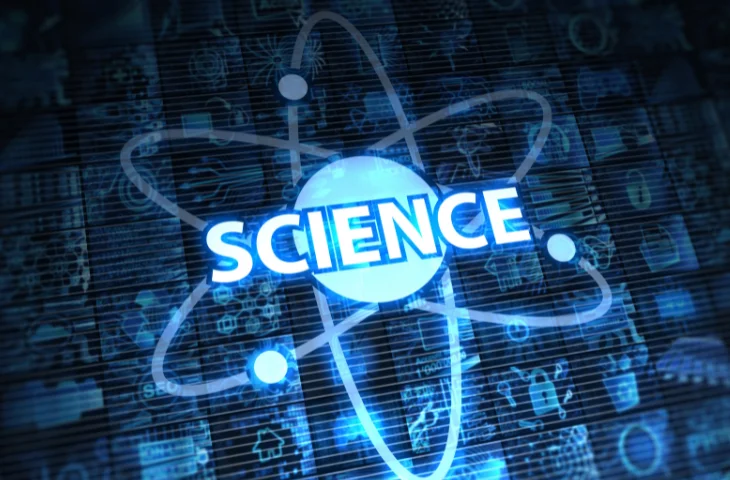Importance of Science in Railways: Indian Railways are not just about tracks, trains, and stations. Behind every smooth journey lies the science that makes the system run. From the motion of trains to the chemistry of fuels and the biology of safety and health, science plays a central role in the functioning of Indian Railways.
For railway exam aspirants, understanding how Physics, Chemistry, and Biology are applied in railways not only strengthens their general science knowledge but also helps them appreciate how railways work in real life.
This article explores the importance of science in railways and explains the applications of physics, chemistry, and biology in simple terms.
Why is Science Important in Railways?
The importance of science in railways is undeniable. Given below are the important reasons for it:
- Railways are a blend of technology and engineering, both based on scientific principles.
- Every part of a train journey—movement, braking, signaling, safety, and passenger comfort—depends on science.
- Railway exams often test candidates on general science questions related to daily applications in trains and transport systems.
- Understanding science in railways helps in solving practical problems and innovations for a better future.
Applications of Physics in Railways
Physics is the backbone of railway operations. From motion to electricity, physics ensures trains run efficiently and safely. Some of the important applications are as follows:
1. Motion and Mechanics
- Newton’s Laws of Motion explain how trains start, move, and stop.
- Friction between wheels and tracks provides grip for movement.
- Inertia explains why sudden brakes cause passengers to jerk forward.
2. Speed, Distance, and Time
- Train schedules, speed limits, and travel times are calculated using formulas of time = distance/speed.
- High-speed trains like the bullet train depend on precise kinematics calculations.
3. Electricity and Magnetism
- Electric locomotives run on electricity supplied through overhead wires.
- Transformers and converters regulate voltage for engines.
- Magnetic signaling systems are used for safety and communication.
4. Sound and Communication
- Train horns are designed on principles of sound waves for maximum audibility.
- Walkie-talkies and wireless communication in railways use radio waves.
5. Thermodynamics
- Engines convert fuel into energy using the laws of thermodynamics.
- Cooling and heating systems in AC coaches are based on heat transfer principles.
6. Safety Systems
- Automatic braking systems work on pressure and mechanical force.
- Physics is applied in designing crash-resistant coaches and shock absorbers.
Applications of Chemistry in Railways
Chemistry ensures that fuel, materials, and cleaning systems in railways function properly. Check out the important information about the applications of chemistry in railways:
1. Fuels and Combustion
- Diesel locomotives run on diesel combustion, where chemical energy is converted into mechanical work.
- Understanding the calorific value of fuels helps in efficiency.
2. Corrosion Prevention
- Railway tracks, bridges, and train bodies are made of metals like iron and steel, which can rust.
- Anti-corrosion paints, galvanization, and alloys are used to protect them.
3. Polymers and Materials
- Seats, interiors, and coach fittings are made using plastics and polymers.
- Lightweight materials reduce energy consumption.
4. Cleaning and Sanitation
- Disinfectants and cleaning agents are used in bio-toilets and stations.
- Chemistry ensures safe water treatment at stations.
5. Fire Safety
- Fire extinguishers in trains use carbon dioxide, foam, or dry chemical powders.
- Flame-retardant materials are used in train interiors.
6. Batteries and Energy Storage
- Train lighting and emergency systems use chemical batteries.
- Future trains may use hydrogen fuel cells for eco-friendly power.
Applications of Biology in Railways
Biology may not seem directly connected, but it plays a major role in health, safety, and the environment in railways. Given below are the applications:
1. Human Physiology and Safety
- Understanding the reaction time of drivers helps in designing signaling systems.
- Ergonomics ensures that train controls and seats are designed for human comfort.
2. Hygiene and Sanitation
- Bio-toilets in trains use anaerobic bacteria to decompose waste into water and gases.
- Clean drinking water supply and food safety at stations depend on biology and microbiology.
3. Pest and Vector Control
- Regular disinfection prevents the spread of diseases like malaria and dengue at stations.
- Biological control methods reduce pests in food storage and catering areas.
4. Environmental Conservation
- Plantation drives along railway tracks maintain ecological balance.
- Understanding biodiversity helps railways reduce harm to natural habitats during construction.
5. Medical Emergencies
- Railway hospitals and medical teams rely on biological sciences for treatment.
- Knowledge of first aid and human anatomy is used in accident response.
Interconnection of Physics, Chemistry & Biology in Railways
Railways are a perfect example of how different sciences work together. One such example is given below:
- Physics powers the train’s motion.
- Chemistry fuels and protects the train.
- Biology ensures health, safety, and environmental balance.
Example: In an air-conditioned coach—
- Physics (thermodynamics) controls cooling.
- Chemistry (coolants and materials) makes the system efficient.
- Biology (human comfort) ensures a safe temperature for passengers.
Importance of Railway Exams
As exam applicants, science is very important for railway exams like RRB ALP, NTPC, Group D, Technician, and more. Some of the important reasons are given below:
- Railway exams frequently include science questions like “Why are bio-toilets used in trains?”, “Which law of motion explains jerk during braking?”, or “Why are steel tracks painted?”.
- A basic understanding of science applications makes these questions easy to solve.
- Candidates should revise NCERT-level Physics, Chemistry, and Biology for maximum benefit.
For railway aspirants, mastering these applications not only helps in exams but also gives a real-world perspective on how railways function. By understanding science in railways, we realize that trains are not just machines—they are a living system of physics, chemistry, and biology working together.
FAQs
Railways are a blend of technology and engineering, both based on scientific principles. Every part of a train journey—movement, braking, signaling, safety, and passenger comfort—depends on science.
Chemistry ensures that fuel, materials, and cleaning systems in railways function properly.
Physics is the backbone of railway operations. From motion to electricity, physics ensures trains run efficiently and safely.
Biology may not seem directly connected, but it plays a major role in health, safety, and the environment in the railways.
For railway exam aspirants, understanding how Physics, Chemistry, and Biology are applied in railways not only strengthens their general science knowledge but also helps them appreciate how railways work in real life.

Hello! This is Arijit Dutta. I am a skilled Content Writer at Oliveboard with nearly 3+ years of experience in crafting engaging, informative, and exam-focused content for the Railways Domain. With a strong command of language and a keen understanding of learner needs, I contribute significantly to Oliveboard’s mission of delivering high-quality educational resources. Passionate about clear communication and continuous learning, I consistently create content that helps government job aspirants achieve their goals. Outside of work, I enjoy playing cricket and listening to music, which helps me stay balanced and creative in my professional journey.
